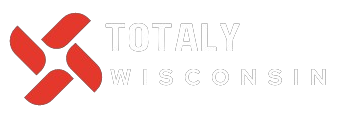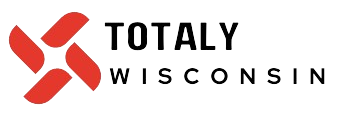ANDN 2024, the Department of Natural Resources Wisconsin (WDNR) counted only 288 male prerery chickens on 37 drugs or breeding places in condition. They were all on state real estate in central Wisconsin, with 73% of birds to Buena Vista State Area.
On January 16, 2025, the Wisconsin Public Service Committee issued the final plans to approve decisions for the largest solar farm in a state, with an area of 10-meter Mili, directly adjacent to the area of wild nature. Because the chickens of the prereques avoid structures (most likely reduce the risk of predation), “green” solar development will have a negative and perhaps catastrophic effect on birds.
According to the form, the developer suggested that for research positions at the University of Wisconsin in order to examine the effects (translation, in order to document the likely extrusion of chickens) and deliver $ 2.1 million to provide a widnr to aid him implement a preria chicken management plan.
Wisconsin is not the only state in which the protection of wild nature is (or has been) dedicated to promote renewable energy. For example, Pine River is the largest wind project in Michigan. Located on both sides of the Route 127, its trace extends to Maple River State Area – One of the most essential breeding areas of water birds in this state.
It is worth noting that neither Wisconsin nor the Department of Natural Resources Michigan vigorously opposed any of the projects despite the high probability of negative effects.
It partly reflects the political nature of current natural resources departments. Politically appointed, and therefore the directors of the Agency in Freedom rarely exceed the governors who set them, the consequences of protection will be cursed.
However, there are other factors.
More reports from outdoor messages:
The details of the case show text messages from Alexander among the reversing suspect after porapping the giant Ohio Buck
Michigan legislation would require something to operate body cameras, search orders
The head of fishing in Ohio, he is looking forward to retirement
Among them is that wild nature management is based on science. In turn, science is based on facts and conclusions based on evidence. Unfortunately, the facts can be complicated (they are always more complicated than green energy declarations as good/bad).
Because complications always require explanations, they are usually ignored in guerrilla communication. The reason is plain: “If you explain, you lose” (Ronald Reagan).
It is obvious that the production of wind and solar energy is renewable, but “renewable” is not the same as “green”, despite the energetic opposite marketing. Most of the evidence indicate that the wind and shining may have a negative (and sometimes significant) impact on migrating birds (especially predators), federal species or a state, such as a wise man or a bastard of the prairie (through increased predation and loss of habitats) and on bats, including several federal species.
It is frustrating that energy programmers can avoid or alleviate many of these threats to wild nature, without building (or next to) critical habitats, or in some cases by developing operational standards that minimize the direct risk of mortality (e.g. without acting in peak migration periods).
The fact that significant concessions are rarely offered is reflected in the fact that location plans are dictated and priori with economic and logistics factors that include the distance from existing or planned electrical transmission lines, the availability of reliable wind or sun resources, federal and/or state financial encouragement and the availability of sufficient land for development.
When the considerations of wild nature appear, the steps taken usually reflect the slightest effort (e.g. before or less commonly surveillance after structure for direct mortality). A compact or no thought has none of them to alleviate other possible consequences, such as the effects related to the success of coverage and nesting, degradation of habitats or increased risk of predators.
In these uncommon cases in which the effects of wild nature are considered, it usually happens that soothing is confined to public land in which federal land management agencies are statutorily required to conduct environmental impact assessments, which usually does not apply to private land.
It is worth noting that federal regulatory agencies and renewable energy industry are aware of these problems. However, as shown in Wisconsin, the typical “resolution” is financed for more research, perhaps in combination with a little money on blood on the plan to manage species or two.
These (cynical) “rear actions” ensure financing for subsidies to scientists and non -governmental organizations to clarify the effects, despite the fact that these effects are easily guessed, quite well documented and largely predictable. Even when research generates practical, and therefore useful results, it reveals that data is rarely translated into less harmful management practices.
Certainly there is nothing surprising (or necessarily bad) in search of the industry methods of maximizing profit. Similarly, this is not the news that regulatory agencies are both solemn and often incompetent.
Because most people are susceptible to the “illusion of the adequacy of information” (i.e. taking perspectives despite incomplete understanding), the green manic of renewable technologies is rarely questioned, while the benefits are generally proclaimed. Unfortunately, ignoring biological facts never makes them go and almost always worsen the results.
Good or bad, most of the problems related to the protection of natural resources and wild nature are luxurious fears for most of the general public and are bad for a dialogue in which explanations are the key to understanding.
The problem is, of course, that the results of bad decision making are high-priced to repair (often at public cost).
When it comes to renewable energy sources, an uninformed popular opinion, selected politicians and, most importantly, the environmental movement (which should know better) approach the uncomplicated -to -predict and avoid negative consequences.
Unfortunately, too little care and those who do this are divided.


